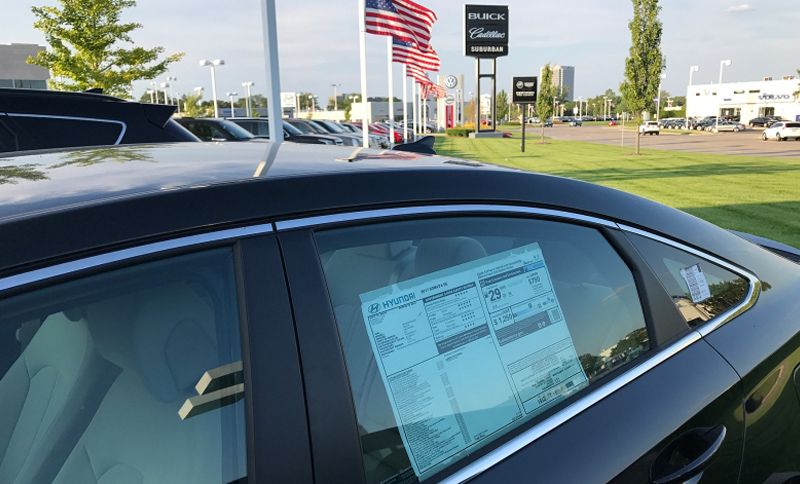How Long is Too Long?
This item originally appeared in the November 8, 2017 issue of Automotive News. It premiered online the same day.
Experts question CFPB’s warning on longer loans

A new report from the Consumer Financial Protection Bureau suggests that the spread of longer-term auto loans poses increasing risks for consumers and lenders.
Outside experts disagree.
The agency’s report, released Nov. 1, said 42 percent of car loans issued in the past year had repayment terms of six years or more, up from 29 percent in 2009, a period when five-year loans declined in popularity in almost equal measure.
What’s more, the bureau found, loan amounts are higher on notes over six years, and those loans have gradually been extended to consumers with slightly lower credit scores. The average amount borrowed for six-year loans, according to the CFPB, was $25,300, compared with $20,100 for a five-year loan. The average FICO score for a six-year loan was 674, or 39 points lower than the 713 for customers with five-year terms. On seven-year loans, the CFPB found an even higher average loan amount: $32,000.
Longer loans for larger balances pose increased burdens, said CFPB Director Richard Cordray. In releasing the report, Cordray noted: “These loans are more expensive and can result in consumers continuing to owe even after they are no longer driving their car.” That risks putting the customer in a negative equity situation when trade-in time comes, leading to even more borrowing.
Higher defaults
Highlighting the risk was that the default rate on six-year terms was, in the CFPB’s research, 8 percent, or twice the 4 percent of five-year terms. The CFPB listed the source of its data as “a major credit bureau,” but the agency did not respond to requests for a specifics.
The agency said the aim of the report was to make consumers aware of lending risks.
Yet the full report also stated that there isn’t necessarily a causal link between longer terms, higher balances and increased defaults.
“There’s been a definite shift to the 72-month loan. It’s really become the new standard loan term in the market,” said Melinda Zabritski, senior director of automotive finance at Experian.
Zabritski attributed the shift to a desire to keep monthly payments low on vehicles as sticker prices have risen faster than wages. “The average [sticker price] of new Honda Civics financed in 2010 was $16,391 compared with $19,484 for Civics financed” in January-August 2017, Zabritski said.
AFSA, Ford Credit
The rise in sticker prices also accounts for the additional amount financed, though Zabritski suggested not every credit bureau would find quite as much of a disparity between five- and six-year average loans as the bureau did.
The American Financial Services Association concurred. “AFSA feels that the CFPB report is a reflection of the cost of vehicles and how consumers attempt to achieve affordable monthly payments,” the industry group said in a statement to Automotive News.
AFSA also noted that members are required to conduct due diligence to make sure payments are affordable relative to the borrower’s household income.
Most lenders declined to comment on the report. But Ford Motor Credit Co. said it is monitoring its portfolio closely.
“We continue to use disciplined and consistent underwriting practices at Ford Credit. FICO scores and the mix of Ford Credit’s higher risk business remain consistent, and longer-term loans remain a relatively small part of the portfolio. Our portfolio continues to perform well,” spokeswoman Margaret Mellott told Automotive News.
Nuanced risk
There’s more nuance than the agency’s report suggested, said Zabritski, when it comes to the relative risk of longer loans. The CFPB study does not make a distinction between prime, near-prime and subprime customers, but the credit mix is quite different between these customers, as are the delinquencies and defaults, she said.
Non-prime and subprime customers, defined as those with FICO scores below 660, are a relatively small percentage of new-car buyers, but those that do buy new tend to have longer terms. In loans of 49-60 months, these riskier customers represent less than 10 percent of buyers, but they represent more than 30 percent of loans over 60 months, according to Experian’s own data, meaning those loans are inherently riskier.
According to Zabritski, for loans on used vehicles, non-prime borrowers represent a much larger slice of all customers but tend to favor shorter terms. And it’s on terms under 48 months where delinquencies, defined as loans in arrears for 60 days or more, are highest for subprime borrowers: more than 20 percent on terms under 48 months but around 14 percent on 61- to 72-month terms.
Zabritski also noted that on new-vehicle loans, those with terms over 75 months tend to see a considerable decline in delinquencies and defaults. She added that overall delinquencies have climbed across the board over the past few years.
Stalking horse?
“The suggestion that the movement toward longer-term contracts may increase the risk of default is based upon a questionable inference drawn from the asserted lack of a decline in the default rate as longer-term contracts have become more prevalent,” says Peter Cubita, who is of-counsel at Ballard Spahr, a Philadelphia firm specializing in compliance.
Chris Willis, another partner at the firm, suggested that the report may also signal the agency is interested in looking more closely at lenders issuing long-term loans of all kinds.
“I think the report signals likely CFPB interest in disclosures and underwriting associated with extended-term contracts, so I would expect to see that interest take the form of information requests in examinations,” Willis said.
